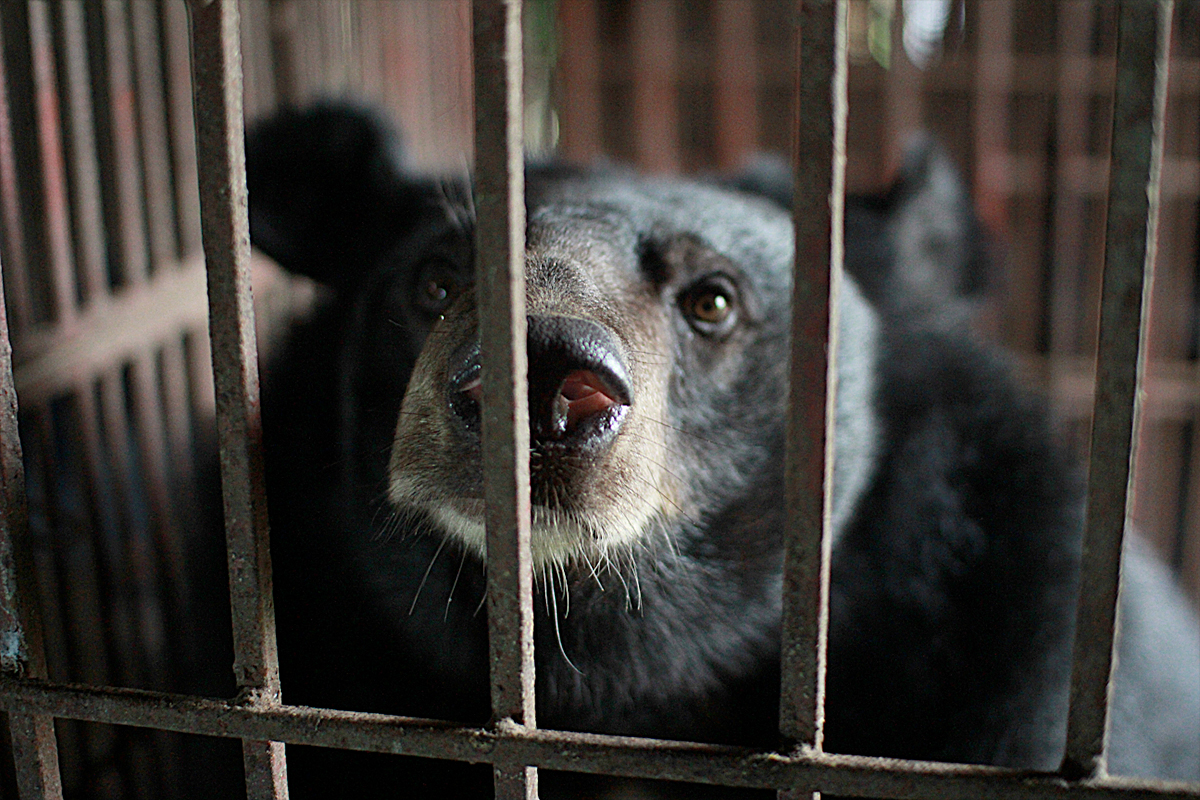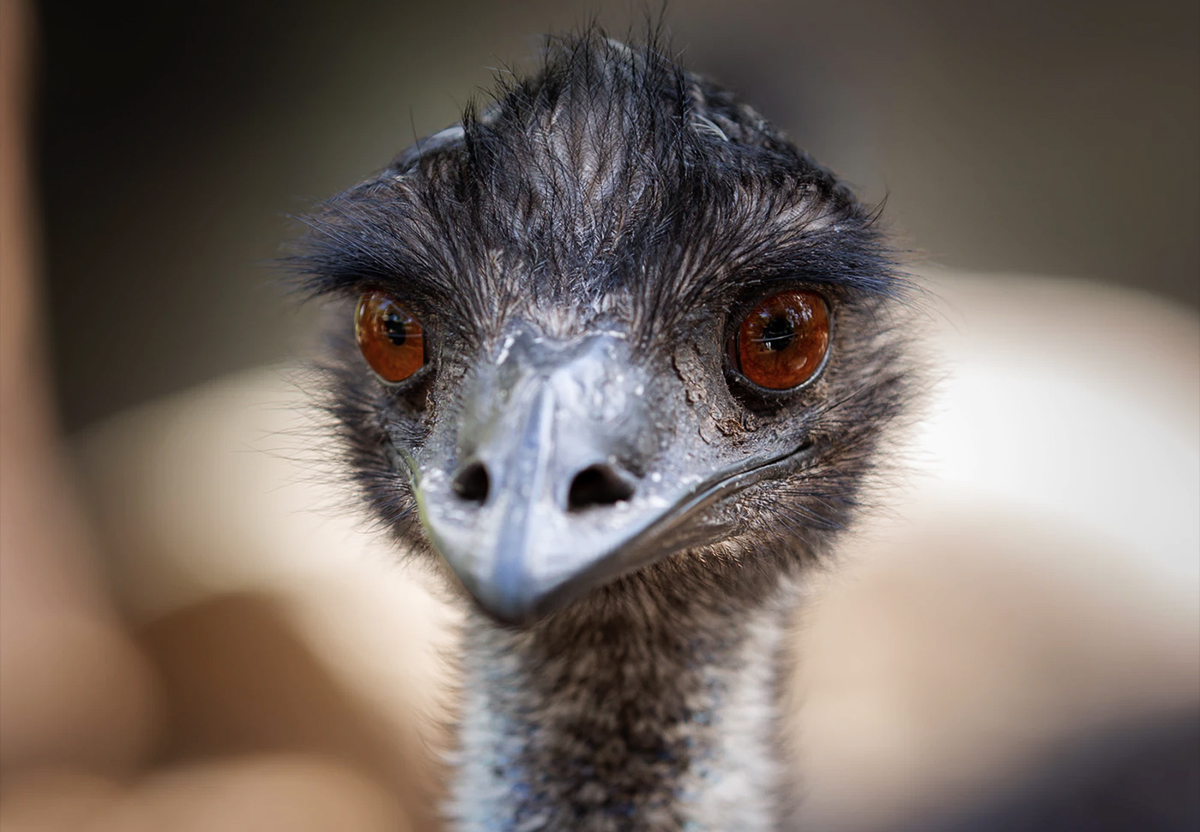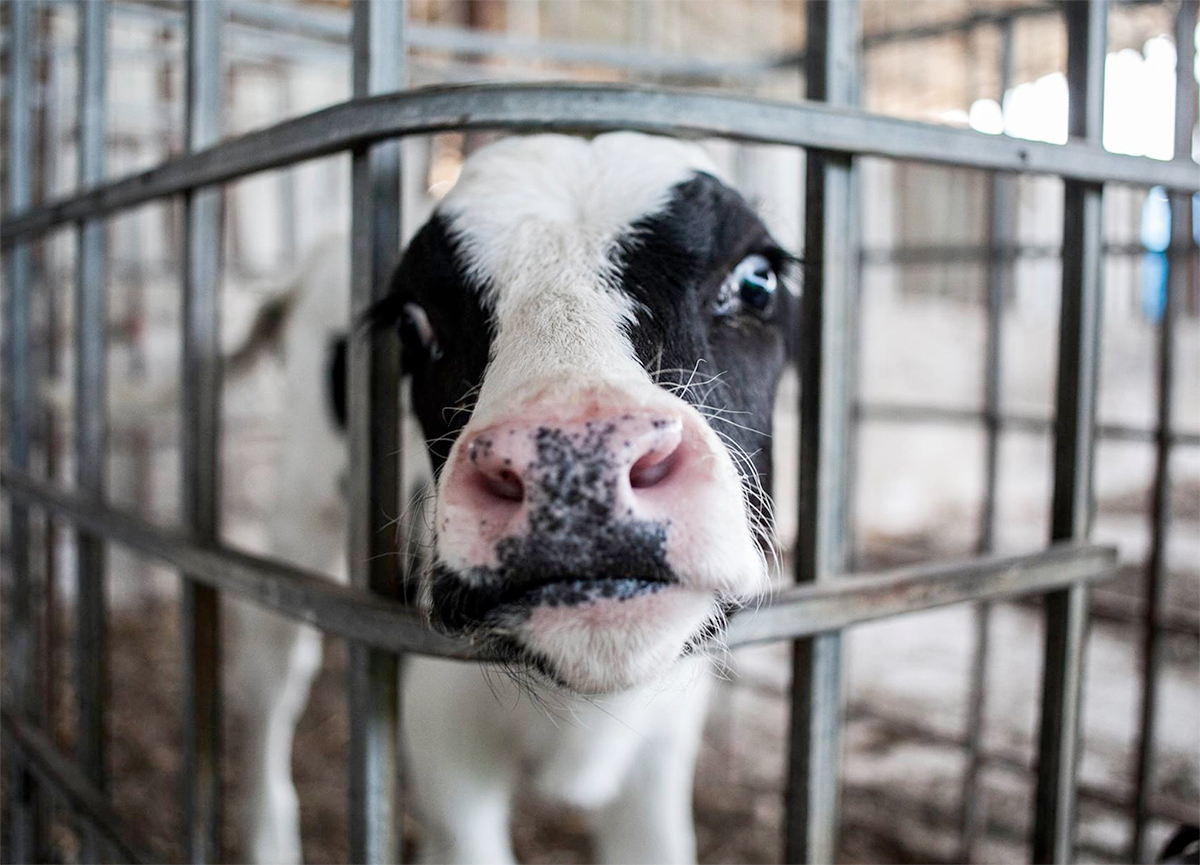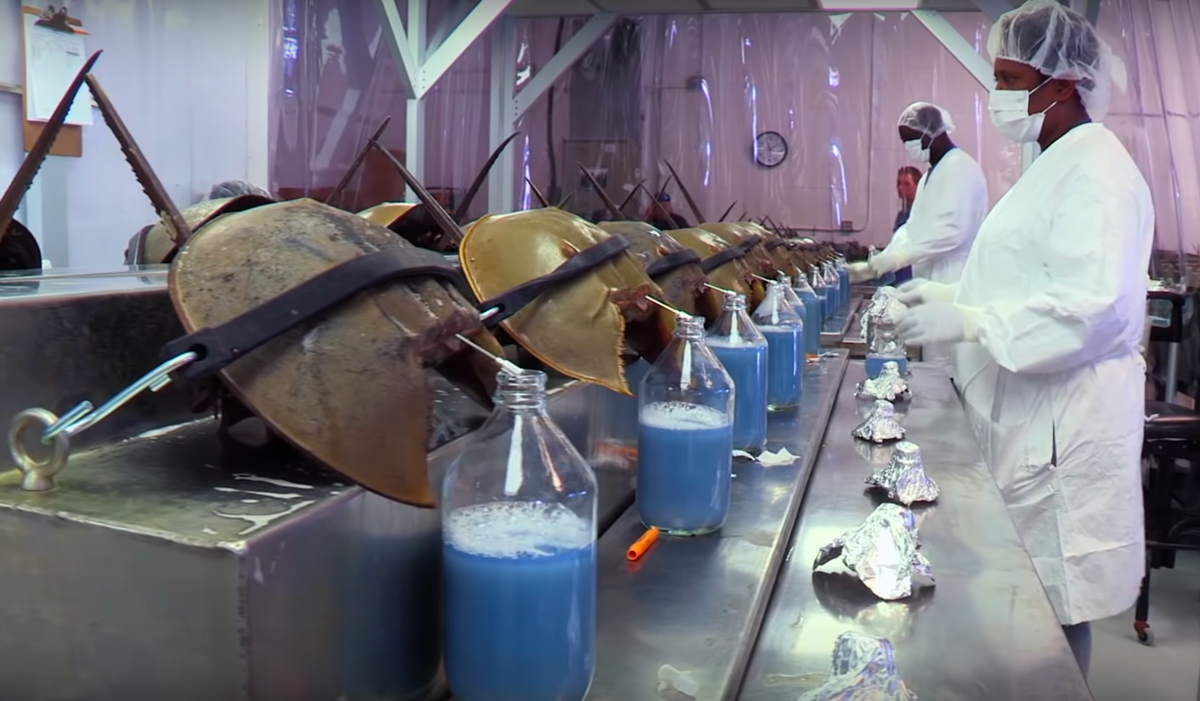As long as we continue to view other animals as resources for our use, rather than individuals with an interest in their own lives and freedom, we will continue to exploit them for everything we can possibly take from them, no matter how degrading.
The industries that profit from the use of animals will continue to find ways to make money from every single thing they can extract from the commodified bodies of their victims, whether selling directly to consumers, as in the case of blood and bone fertilizer for organic gardening, or to other industries, as in the case of hooves and connective tissue (gelatin) for use in pharmaceuticals, supplements and candies, or skeletal remains (bone char) to be used as the basis for sugar filters.
If we take an honest look at the myriad of ways in which we use others for our gain, we realize that our relationship with our fellow animals is based on a profound, and profoundly unjust, imbalance of power, and that the industries we have created in the context of that relationship are a reflection of the deeply disturbing root problem in our society: the belief that some lives matter less. When we begin to see both the extent of our tyranny over other animals, and their suffering at our hands, the only rational response is to withdraw our support, as far as is practicable, from every aspect of animal use and — by embracing a vegan philosophy — to commit to the practice of respect for the rights and interests of all, regardless of species.
Bear Bile Farming
The World Society for the Protection of Animals estimates that as many as 12,000 bears are kept in captivity on both legal and illegal bear bile farms. In 2010, it was estimated that there are as many as 97 legal bear bile farms in China alone.
While Sun bears and brown bears are also used for bile farming, most bile bears are Asiatic black bears, also called “moon bears” for the cream-colored crescent pattern on their chest. Sun bears and Asiatic black bears are both listed as vulnerable species by the International Union for Conservation of Nature.
 Photo: Four Paws International
Photo: Four Paws International
Bear bile is extracted almost exclusively in China and Vietnam, and it plays a significant role in traditional Asian medicinal beliefs. It’s falsely thought to treat a wide range of ailments, and it has been used in traditional healthcare practices, primarily in East Asia, for centuries.
In China, in particular, bear bile is seen as a vital ingredient in medicinal teas, wines and other products ranging from toothpaste to facial cleansers. It’s falsely believed that bear bile can cure everything from cancer to hangovers. Traditional holistic practitioners prescribe the substance, believing it will treat hemorrhoids, acne, conjunctivitis and more.
The substance referred to as ‘bear bile’ is actually a naturally-occurring digestive enzyme found in bear bile called ursodeoxycholic acid (UDCA). UDCA is responsible for many of bear bile’s purported healing properties, and while it does have legitimate medicinal benefits, it’s important to note that synthetic UDCA (which does not involve bear farming) is just as effective. And, even if it weren’t, extracting bile, or any other substances, from the bodies of nonconsenting others would still be unethical and unacceptable.
Bear bile farms are infamous for their horrific conditions and the cruelty inherent in the process of extracting UDCA straight from the organs of still-living bears. In many cases, bears are kept in small metal cages that don’t provide room to move or stand upright. Many bears are held in these cages from the time they are cubs until their deaths. While many bears farmed for bile die early due to health complications, some can live as long as 30 years.
Bile is extracted from the bear’s gallbladder using one of two primary methods. The “free drip” system involves installing a tube leading out of the bear’s gallbladder. The other method requires bile farmers to insert a permanent catheter directly into the gallbladder. Both of these extraction methods cause extreme pain, and usually lead to infection and eventual death.
Because the bears are kept in such small spaces and are often malnourished and underfed, they’re prone to develop bone deformities, as well as parasitic infections and other chronic illnesses. Bears rescued from bile farms also typically suffer from elevated levels of corticosteroid, a stress hormone.
Vietnam outlawed bear bile farming in 2005; however, in a classic demonstration of the inefficacy of government intervention without a corresponding shift in cultural attitudes, a loophole in the legislation allowed former bile farmers to keep bears they already owned as “pets.” Many bile farmers exploited this loophole and continue farming bears for bile illegally.
Fetal Bovine Serum (FBS) or Fetal Calf Serum (FCS)
When cells and tissues are grown in a lab for research or other purposes, the cells require a source of nutrients in order to proliferate. Fetal bovine serum (FBS), a substance derived from the blood of calf fetuses, is often added to cell cultures for this purpose. FBS is also used as an ingredient in certain vaccines.
Although there is apparently a plant-based alternative, and some companies claim to be aiming to use it exclusively, it should also be noted that the use of FBS is currently the prevailing method for proliferating cells used to grow lab-based animal products such as “meat” and leather.
Most of the calf fetuses used for FBS are discovered only after their mothers have been murdered in the slaughterhouse. (It is estimated that approximately 8% of cows sent to slaughter are pregnant.) When fetuses older than three months of age are found in their mothers’ bodies, they are cut out of the womb, exposing them to open air for the first time. Their beating hearts are then pierced with a needle, and the blood is completely drained out of their bodies, causing them to die. This blood is then processed and sold as FBS.
There is evidence that mammalian fetuses are capable of feeling pain even while still in the womb, and there is further evidence that exposure to oxygen in open air causes them to become even more conscious. Every year, an estimated two million calf fetuses are killed in the production of 800,000 litres of FBS.
Because the fetuses are taken from cows who were exploited for their flesh and milk, FBS is essentially a product of the dairy and “beef” industries. In addition, FBS is often tested for endotoxins using horseshoe crabs’ blood. In light of the fact that various forms of violence against non-human animals are interconnected, dismantling speciesist prejudice and promoting veganism are the keys to ending all of these forms of violence.
Emu Oil
Reproduced with permission from theresanelephantintheroomblog.wordpress.com
The farming of emus is once again increasing, due to consumer demand for ’emu oil.’ Following a lull in the early 2000s, demand is currently increasing for this oil, which is sold as an anti-inflammatory, although claims about its efficacy are unproven and appear highly suspect.
A soft-feathered, brown, flightless bird reaching up to 1.9 metres in height, the emu is native to, and farmed in, Australia as well as North America, Peru, China, India and elsewhere.

Photo: Priyan Solanki
Emus are primarily farmed for their dead flesh, their skin, feathers, and in particular, an oil made from the fat of slaughtered individuals. Native to a frequently challenging environment, emus have fat stores on their backs, for survival. If food is scarce, they can tap into this and can go weeks without eating if they have enough in their reserves.
Emu feathers are used for fishing lures, hair extensions, flower arrangements, hats and numerous decorative arts and crafts. As is also inflicted upon geese, ducks and some other species, feathers are sometimes plucked from living birds, so that the excruciating process can be repeated when they grow back. This causes agony for the birds, who are often blindfolded while this occurs to prevent their attempts to defend themselves. Because each feather is held firmly in a follicle where there are nerves receptive to pain, the victims are covered in blood by the end of the plucking process. ‘Leather’ made from the flayed skin of deceased birds has a distinctive patterned surface, due to a raised area around the feather follicles in the skin and is used in such items as wallets, handbags, shoes and clothes.
With a natural lifespan of about 60, they’re slaughtered before reaching the age of 2. Like the majority of our victims, emus are gentle individuals who resist every step of the way to the slaughterhouse as they are captured, terrorised, shoved onto trucks, deprived of food and water, then taken to their deaths.
Upon arrival, they are herded off the trucks to the kill floor. They are then shot with a captive bolt or electrically stunned, then hung upside-down before their throats are cut. They are still alive as their blood begins to drain, which is the norm for the slaughter process as applied to all our land-based victims. Like the vast majority of the victims of nonvegan consumer demand, the terrified individuals die a lingering and painful death.
Rennet
In the food industry, rennet (or rennin) is used as a coagulant – in cheese-making; in certain dairy products, including some yogurts; and in junket, a soft, pudding-like dessert.
Rennet is a natural complex of enzymes produced in any mammalian stomach to help a nursing baby digest mother’s milk. To be used as an ingredient, it is extracted from the inner mucosa of the fourth stomach chamber of young, un-weaned calves. Most of these babies are taken from their mothers shortly after birth so her milk can be consumed by humans. Many are killed 4-6 motherless months later so their flesh can be sold to consumers as “veal”.

Photo: Glass Walls
In certain traditional recipes, the butchered bodies of these infants (described as “cuts of veal” by the food industry) are served accompanied by cheese: a product made of milk stolen from mothers such as their own, and congealed with the aid of the enzyme produced in their stomachs for the purpose of helping them to nurse healthfully and peacefully.
Horseshoe Crab Blood
On the east coast of the United States, as many as 600,000 horseshoe crabs are pulled from the ocean every year, so that their blood can be used by the biomedical industry in order to test vaccines, as well as injectable medications and certain medical devices, to ensure that they are not contaminated and are therefore safe for human use.
Horseshoe crabs, in fact, are not crabs at all, but arthropods related to spiders and scorpions. Unlike vertebrates, they do not have white blood cells to help them fight infections. Instead, their blood contains amebocyte cells. In the presence of bacterial toxins, amebocytes cause blood to clot in order to prevent contaminants from spreading throughout the individual’s body. Sadly, because of the rapid reaction of their blood to toxins, it has become so prized by the medical industry that a quart of it can be worth approximately $15,000 dollars, causing the number of crabs used by the U.S. biomedical industry to jump 86 percent from 2004 to 2013, when nearly 550,000 animals were bled in extraction plants.

Image: Business Insider
After being torn from their ocean habitat, horseshoe crabs are taken to a facility where they are strapped to racks for 24 to 72 hours in a truly dystopian scene while 30 percent of their blood is forcibly drained from their bodies. Up to 30% of the crabs don't live through the process.
Although the majority of the survivors are released back into the ocean after being bled, an estimated 15 to 30 percent of released individuals die, as they are unable to cope with the injury and trauma. An average of 13 percent of the victims are then sold to be used as bait in the fishing industry. A conservative estimate of total horseshoe crab deaths from this practice (including those sold to fisheries and the number who die as a direct result of the bleeding) is 130,000 per year.
Horseshoe crabs possess brains and nerves, so it is clear that they are sentient beings who are capable of feeling pain. If left unharmed, a horseshoe crab can live for more than 20 years. The long-term effects of this torturous experience on the survivors are not yet well-understood, but researchers have found that they become weak and disoriented in the weeks following the procedure, developing an increased susceptibility to disease, and lower spawning rates.
An animal-free method of testing for bacterial toxins has already existed for more than a decade. But due to the inconvenience of having to change practices and navigate regulatory hurdles, the pharmaceutical industry has been resistant to change.
Ivory
"Ivory" is a term that applies to the teeth and tusks (essentially elongated teeth) of mammals, consisting of dentine (the innermost layer, and the bulk of the tooth/tusk), cementum (the middle layer), and enamel (the hardest substance produced by an animal's body, forming the outer layer). The amounts of these components vary from species to species. Elephant ivory, for example, only has enamel around the tip of the tusk, making it easier to carve, which is perhaps one reason it has become valued over other types of ivory.

Photo: Karim Manjra
Although the basic composition of all mammalian teeth/tusks (including those of humans) is generally the same, the term "ivory" is traditionally used only to describe the teeth of mammals that have some sort of cultural or financial value. While elephant ivory is the most common and the most frequently exploited, ivory has also been taken from tooth whales, hippopotami, walruses, and even wild boars.
Up to a third of an elephant's tusk is housed under the skin, inside their skull (much the same way human teeth are embedded in the skull and jaw bone). Most poachers remove the entire tusk, leaving the elephant to bleed to death (if they haven't already been killed by other means, such as gunshots or poisoning).
Even if a tusk is sawed in half for removal (a practice nearly unheard of due to the financial value of any part remaining), this leaves the elephant with the possibility of developing a life-threatening infection, or dying of medical complications, especially if they have been improperly anesthetized or tranquilized.
Even if ivory did not require the death of the individual from whom it is taken, one must remember that ivory is the body part of another living being, and we have no right to take it from them, any more than someone has a right to harvest the body parts of a human being.
Furthermore, even in the extremely rare cases where ivory comes from animals who have died of natural causes, or in cases where a tusk has fallen out naturally, the use of ivory helps to reinforce the idea that the bodies of other animals are a resource for us to use, as well as feeding demand, ultimately leading to the death of more animals.
Perhaps the best way to combat the ivory trade, and protect countless animals, is through education and enlightenment, rather than laws and regulations. We must, as a global society, instill in people the understanding that the lives of our fellow animals are far more valuable than what is being stolen from them.
Even in the absence of alternatives, stealing someone’s teeth or other body parts, would still be wrong but, alternatives to ivory abound in our modern age. "French ivory" is a plastic/celluloid material specifically designed to resemble real ivory, and has been around since the 1860's. There is also "plant-based ivory," carved from the large nuts of certain tropical palm trees, such as the tagua nut. When carved and polished, their resemblance to actual ivory is remarkable.
By informing potential consumers as to the ethical concerns surrounding animal-based ivory, devaluing it in our cultural consciousness, and providing beautiful, yet practical alternatives, ivory may soon be universally condemned and relegated to humanity’s crimes of the past.
Rhino Horn
Tragically, rhinoceroses face a plight similar to those who are hunted for their ivory. In the case of rhinos, poachers are after their horns, due largely to the fact that rhino horn has long been used in traditional Chinese medicine. Despite the fact that a rhino's horns are made out of keratin (the same substance that human fingernails, toenails, and hair are made from) there is an archaic (and completely unsubstantiated) belief that the ingestion of rhino horn can positively impact male fertility and virility.

Photo: Alex Bortolato
Although a damaged horn can eventually grow back, just like trimmed nails or hair, the horrifying fact is that rhinoceroses are usually killed when their horns are taken. The widespread killing has led many species of rhino to become critically endangered, while certain subspecies have essentially gone extinct. At the time of this writing, only two female northern white rhinos are still alive, following the death of the last remaining male, named Sudan. While scientists plan to impregnate the females with frozen sperm from Sudan, this misguided effort will lead to severe inbreeding and, at the same time, waste a valuable opportunity to bring attention to humanity's complete and utter failure to keep northern white rhinos from going extinct in the first place.
In order to protect the remaining rhino populations, some have suggested rhino horn farming, in which rhinos would be raised on farms in order to have their horns trimmed using nonlethal means, and the horns sold in a legal market. Yet this idea only further commodifies rhino horn, and ultimately the rhinos themselves, while contributing to the false belief that rhino horn has some sort of economic and medicinal value to humans.
The best way to save rhinos (as well as pangolins, who are also hunted for their keratin scales) is through public education campaigns focused on dispelling the myths surrounding rhino horn, and emphasizing the inherent right of these individuals to exist for their own purposes, free from human interference.
The legacy of Sudan, the last male northern white rhino, should stand as a reminder of just how much has been lost for this species now facing complete extinction. Just like the tusks of an elephant, a rhinoceros' horn is a part of him or her. As such, it belongs solely to the individual whose body it is designed to defend, and we have no right to take possession of it as our own.
Pearls
In nature, oysters produce pearls when a grain of sand becomes lodged inside their shell and they are unable to expel it. The sand is irritating to the oyster's soft body, much like a rock or pebble inside a person's shoe. In an attempt to find relief, the oyster secretes a liquid (nacre, or mother-of-pearl) from a gland that it then uses to coat the grain of sand, making it soft and squishy, and providing a natural cushion that alleviates the irritation.

Photo: Charlotte Coneybeer
Unfortunately, this liquid secretion eventually hardens into a small pearl, and only exacerbates the situation. Over time, the oyster applies more and more secretion, which in turn hardens and makes the pearl bigger and bigger. The larger the pearl, the longer it was trapped inside the oyster's shell, with some pearls taking years to form.
In a perfect world, all pearls would be obtained only after the oyster was able to expel it from its shell and be rid of the burden. Perhaps the pearl would wash up on the beach, and a person could retrieve it, much like collecting an old seashell.
Sadly, however, pearls used in the commercial jewelry trade are collected from oysters raised in aquaculture facilities, specifically kept to produce pearls. To produce these "cultured" pearls, oysters are pried open in order to place an irritant inside their bodies, which involves surgically cutting into their soft tissues. The irritant may be a grain of sand, a plastic bead, or even a piece of another oyster's shell or body tissue. This is a very delicate process, known as "grafting," and many oysters can die or suffer serious bodily harm as a result, if complications arise or the procedure is not performed properly.
After the pearl is formed to the desired size, the oyster is reopened, and the pearl is extracted, which involves more surgery, i.e. cutting into the oyster's soft tissue. Some oysters are then reused/regrafted, while others are discarded or killed, especially if they do not produce satisfactory pearls. One industry study of pearl farming in Micronesia found that 50-70% of all oysters were killed and discarded after their first pearl.
Are oysters sentient? Do their nerve ganglia (which are like “mini brains” similar to the nerves of our own nervous system) give them the capacity to feel? Almost certainly, but even if we may never be able to prove with absolute certainty that oysters, clams, and mussels feel pain, we can, and should, err on the side of respect and leave them alone. We don’t need to end lives that are obviously trying to avoid being ended when we have such an abundance of nonviolent choices.